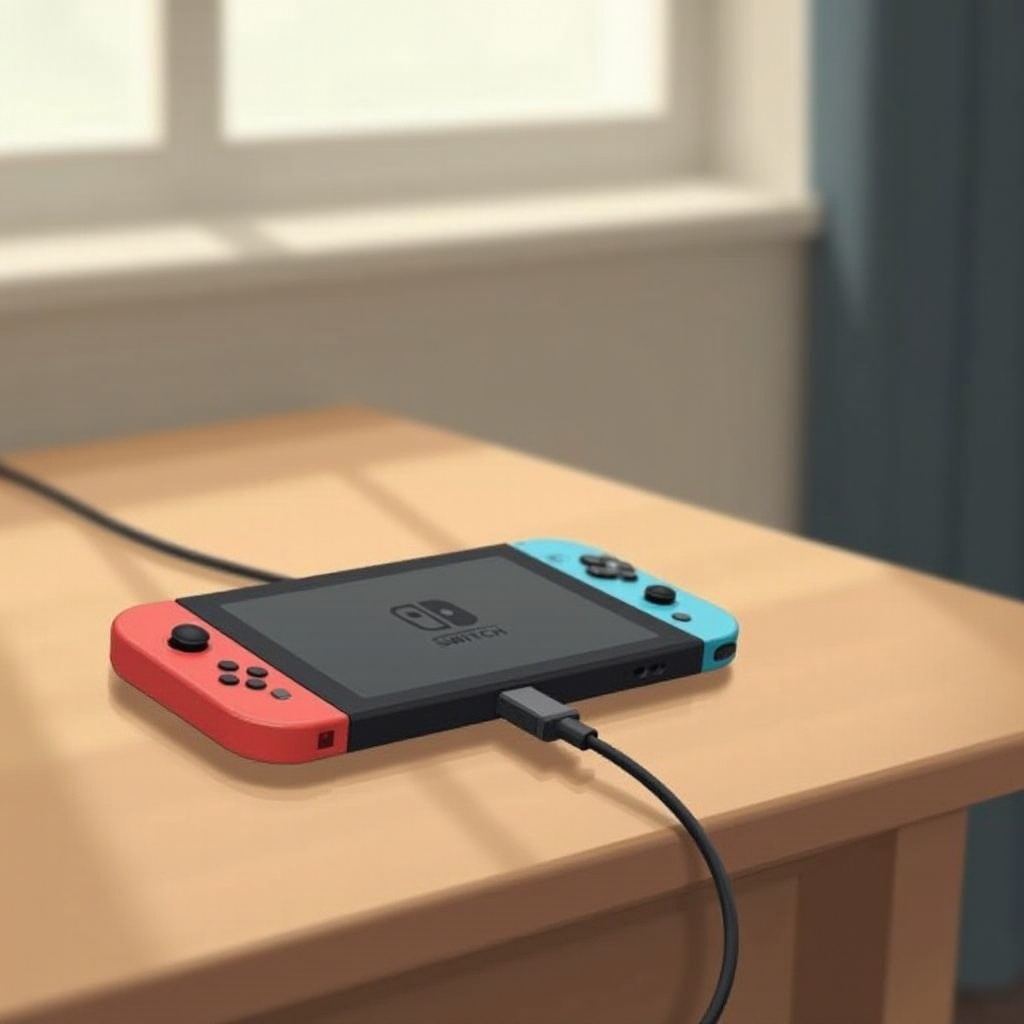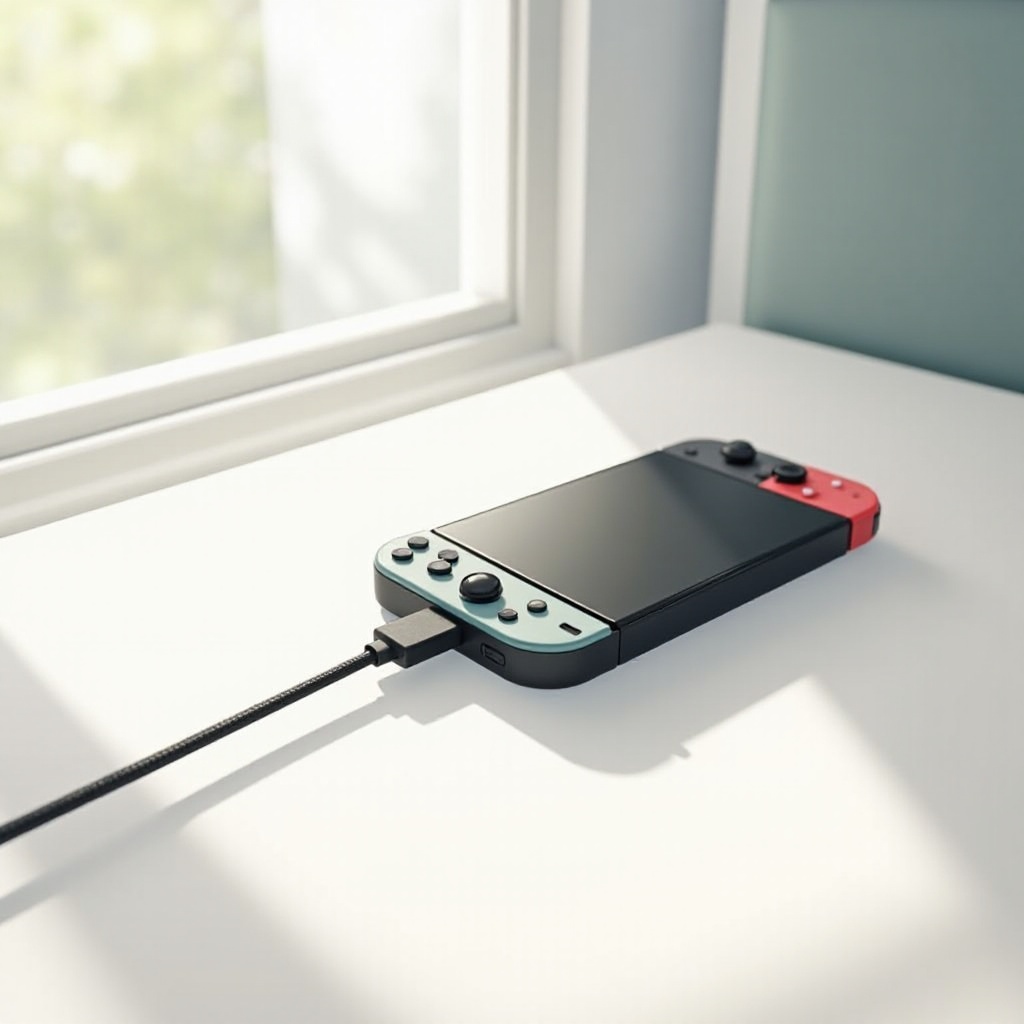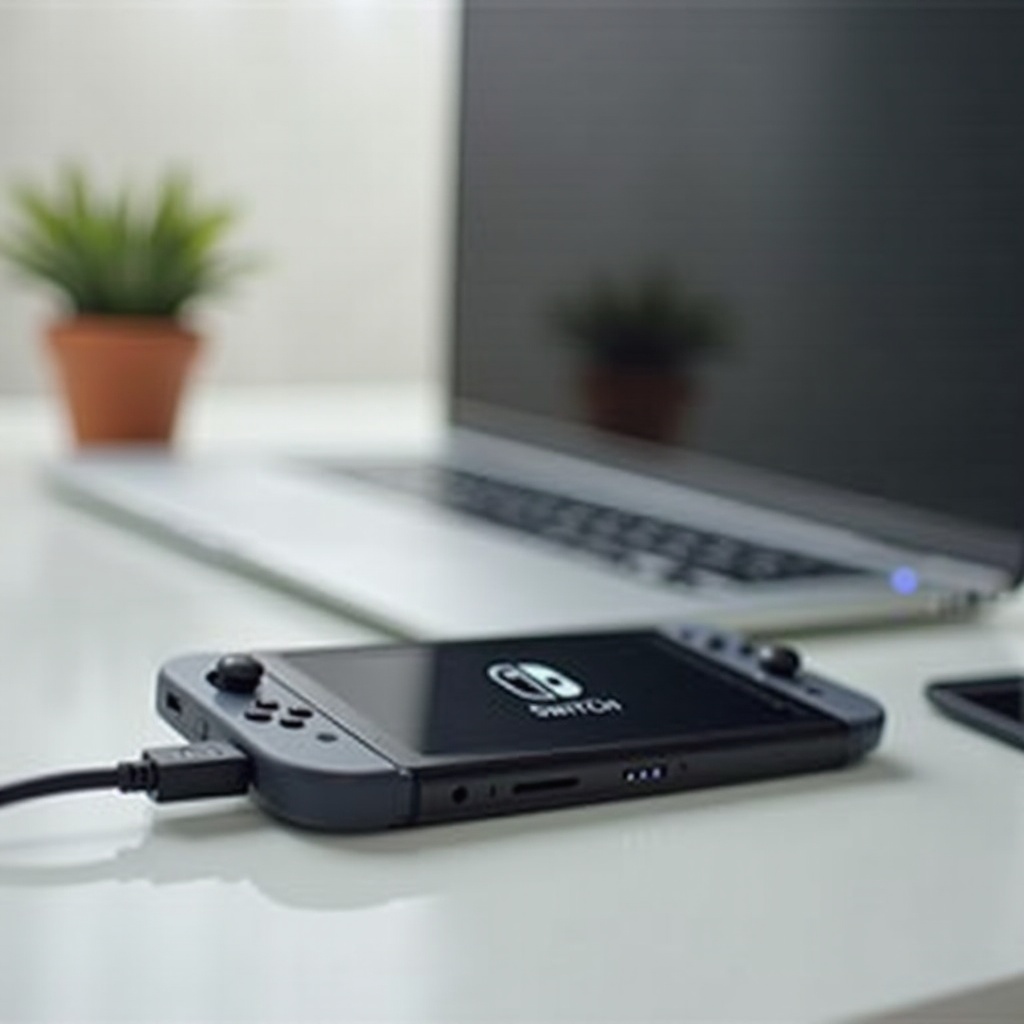Introduction
Flexibility and portability are the hallmarks of owning a Nintendo Switch. Yet, these qualities present a challenge: maintaining a charged device without the aid of the docking station. Fortunately, you don’t always need a dock to ensure your Switch remains powered. Whether you’re embarking on a road trip or visiting a friend’s house, there are practical solutions to keep your console charged. This guide will explore diverse methods to charge your Nintendo Switch without relying on its dock so your gaming can continue uninterrupted.

Understanding the Nintendo Switch Charging Options
Grasping the available charging options for the Nintendo Switch is key to enjoying gaming wherever life takes you. With a USB-C port, the Switch can harness its power from a variety of sources. Unlike consoles strictly linked to their docks, the Switch supports USB-C cables, allowing for charging via wall adapters, portable battery packs, and even car chargers.
This versatility makes gaming sessions more flexible and less prone to disruption. By familiarizing yourself with these charging avenues, you can choose the most suitable method based on your current location and the equipment at your disposal. Now, equipped with this understanding, let’s explore the most straightforward charging option: the USB-C cable.
Using a USB-C Cable
Charging your Nintendo Switch without the dock using a USB-C cable is a fundamental and convenient approach. Here’s how you can use this method effectively:
-
Select a High-Quality USB-C Cable: Opt for a robust and certified USB-C cable. Fast-charging capabilities can significantly reduce the time it takes to power your device.
-
Connect to a Wall Adapter: Utilize a USB-C wall adapter that meets or exceeds the official Nintendo Switch charger’s output (15V/2.6A). This ensures efficient and safe charging.
-
Connect to a Laptop or Computer: When using a laptop, connect the USB-C cable to the USB-C port for charging. Keep in mind this method might offer slower charging times.
Utilizing a USB-C cable gives you flexible charging options, especially where wall outlets are readily available. However, when you’re journeying, portable battery packs offer an efficient alternative, as we’ll explore next.
Charging with a Portable Battery Pack
Portable battery packs are ideal companions for switching up your Nintendo Switch charging routine during travel:
-
Choose a Compatible Power Bank: Look for a power bank providing at least 18W (3.6A at 5V). The mAh capacity determines the number of charges it can supply.
-
Connect with a USB-C Cable: Plug one end into your Switch and the other into the power bank.
-
Monitor the Charging Status: Watch for the charging indicator on your Switch to confirm it’s receiving power. This method offers portable power wherever needed.
Using a battery pack liberates you from fixed locations. However, during car journeys, an alternate solution can further streamline charging needs.
Car Charging Solutions for Your Switch
For on-the-road charging, a car charger enhances convenience:
-
Purchase a USB-C Car Charger: Opt for one with output specifications comparable to the official wall adapter’s (15V/2.6A). Models with multiple ports are particularly beneficial.
-
Use the Cigarette Lighter Socket: Insert the USB-C car charger into your car’s cigarette lighter and connect your Switch using a reliable USB-C cable.
-
Charge While Driving: This approach is useful on prolonged trips, keeping your Switch ready without a dock.
The on-the-go charging solutions we’ve discussed fit well into travel-heavy lifestyles. Should circumstances limit these preferences, innovative alternative methods might prove helpful in a pinch.
Alternative Charging Methods
Some situations demand creative charging tactics. Here are alternatives that might come to the rescue:
- Smartphone Chargers: In emergencies, connecting a compatible smartphone charger with USB-C can work, albeit at a slower rate.
- USB Charging Hubs: Multi-device hubs efficiently charge your Switch simultaneously with other gadgets.
- Solar Chargers: These less common options are excellent for outdoor enthusiasts needing power where outlets are inaccessible.
These unconventional methods cater to unique cases where traditional ones may not suffice. Sometimes, potential issues arise, and knowing troubleshooting techniques ensures continued game-ready status.

Troubleshooting Common Charging Issues
Charging difficulties can occur when departing from dock utilization. Address issues with these troubleshooting recommendations:
-
Check Cable and Adapter Connections: Confirm connections are firm. Looseness frequently affects charging success.
-
Test with Different Equipment: If charging preferences fail, employ another USB-C cable or power source to identify compatibility issues.
-
Update System Software: System updates might address glitches impeding charging performance. Ensure your camera’s software is current.
These strategies will resolve many charging troubles. With numerous methods at your disposal, charging your Nintendo Switch without a dock becomes simple and effective.

Conclusion
Charging your Nintendo Switch without a dock is achievable through various methods. By incorporating USB-C cables, portable battery packs, and car chargers, you’ll secure consistent power across different contexts. By recognizing and applying these strategies, your gaming exploits remain uninterrupted, no matter where you wander.
Frequently Asked Questions
What type of cable is best for charging a Switch without the dock?
The ideal cable is a high-quality USB-C cable certified for fast charging, ensuring efficient power influx and minimizing overheating risks.
Can I charge my Switch with a phone charger?
Yes, provided the charger has a USB-C connection and supports at least 18W output, though expect slower rates compared to the official charger.
How long does it take to fully charge a Switch using a power bank?
With an 18W power bank, a Nintendo Switch typically reaches full charge in about 3 to 4 hours, similar to wall outlet timings.